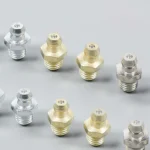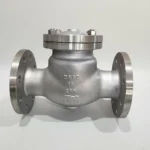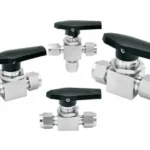1. External spring-sealed fully-opened needle valve structure: mainly by the body (including the seat), spool (including the stem), and pressure load composition. The system is shown in figure 6-i. The valve seat is installed in the valve body. The outer ring of the valve seat is an adjusting ring to adjust the opening height of the needle valve. Under normal circumstances, the spring pressure is greater than the gas for the action of the spool, so the spool pressure valve seat and needle valve tight leak. The opening pressure of the needle valve is adjusted by adjusting the size of the spring pressure with the adjusting screw.
2. Spring-loaded needle valve construction: the needle valve is mounted on a Liquefied petroleum gas, as shown in Fig. 6-2. The needle valve structure is the same as that of the external needle valve, except that the needle valve is placed in the tank to avoid bumping and hanging while driving. The tank body is connected with flanges, bolts, and nuts and is sealed with an oil-resistant asbestos rubber plate lined in the middle. When the pressure in the tank exceeds the working pressure, the gas pushes the spool; the spring compresses, the stem moves and rises, the needle valve opens, and the Liquefied petroleum gas begins to drain to reduce the pressure. When the pressure drops to a specified value, the needle valve closes. Before leaving the factory, the tank should be tested for gas tightness. The working pressure and sensitivity should be qualified and sealed with lead. Do not remove the lead seal or loose adjustment nut in use, should be regular maintenance personnel debugging and constant pressure to ensure that the needle valve is sensitive and reliable.
3. Spring-type needle valve principle of work; Spring-type needle valve is the spring as a pressure load, so its structure is relatively light and compact. When the internal pressure reaches the opening pressure of the spring-type needle valve, the force acting on the valve core is greater than the spring force, so the valve core is pushed away from the valve seat, and the gas is discharged from the gap between the valve core and the valve seat. When the pressure falls below the safety limit, the spring force is greater than the gas on the spool; the spool is pressed back to the seat, and the needle valve is closed again.
The effective exhaust cross-section area of the full-open type needle valve is more significant than that of the micro-open type needle valve. The open height of the full-open spool is 1/3 ~ 1/4 of the inner diameter of the valve seat. Full-open needle valves are recommended for Liquefied petroleum gas tanks as they do not provide rapid depressurization.




